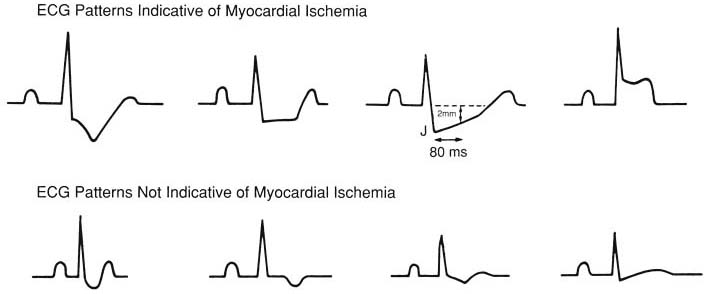 |
 |
Figure 27-11
Electrocardiographic (ECG) criteria for myocardial ischemia
consist of 1 mm or more of J-point depression with downsloping or horizontal ST segments;
slowly upsloping ST-segment depression, defined as 2 mm of ST depression measured
80 milliseconds from the J point; and ST-segment elevation. Whereas ST-segment depression
indicates nontransmural ischemia, ST-segment elevation often connotes more severe
degrees of ischemia reflecting transmural injury. The structure of the ST-segment
slope is predictive of the severity of coronary disease shown angiographically, with
downsloping ST depression indicating severe two- and three-vessel coronary artery
disease more often than either horizontal or slowly upsloping ST depression does
and ST-segment elevation indicating high-grade, usually proximal arterial obstruction
in patients without previous myocardial infarction. (Reproduced with permission
from Goldschlager N: Use of the treadmill test in the diagnosis of coronary artery
disease in patients with chest pain. Ann Intern Med 97:383, 1982.)

 |
